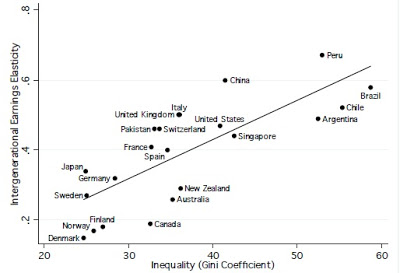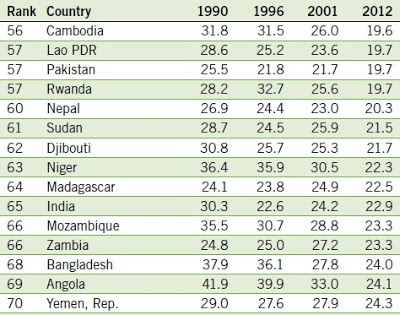Are Muslims Better off in Jinnah’s Pakistan?
By Riaz Haq
CA
As Pakistanis celebrate the Pakistan Day on March 23, 2013, there are some who are questioning the founder's wisdom in seeking the partition of India to carve out Pakistan as an independent nation. They do not recognize today's Pakistan as Jinnah's Pakistan. The doubters justifiably point to the rising tide of intolerance and increasing violence and a whole range of problems and crises Pakistan is facing. Many in the oppressed Shia community wonder aloud if it was a mistake to demand a separate country for Muslims of undivided India.
Are the critics correct in their assessment when they imply that Muslims in Pakistan would have been better off without partition? To answer this question, let us look at the following facts and data:
1. Muslims, the New Untouchables in India
While India maintains its facade of religious tolerance, democracy and secularism through a few high-profile Muslim tokens among its high officials and celebrities, the ground reality for the vast majority of ordinary Muslims is much harsher.
An Indian government commission headed by former Indian Chief Justice Rajendar Sachar confirms that Muslims are the new untouchables in caste-ridden and communal India. Indian Muslims suffer heavy discrimination in almost every field from education and housing to jobs. Their incarceration rates are also much higher than their Hindu counterparts.
According to the Sachar Commission report, Muslims are now worse off than the Dalit caste, or those called untouchables. Some 52% of Muslim men are unemployed, compared with 47% of Dalit men. Among Muslim women, 91% are unemployed, compared with 77% of Dalit women. Almost half of Muslims over the age of 46 cannot read or write. While making up 11% of the population, Muslims account for 40% of India’s prison population . And, they hold less than 5% of government jobs.
A recent update authored by Abusaleh Sharif, member secretary of the Sachar committee and the man widely regarded as being the main author of the committee's report, indicates that not much has changed since 2006 when the original Sachar Commission report was published. The new report has been released by the US-India Policy Institute of which Sharif is now the chief scholar.
2. Upward Economic Mobility in Pakistan
In spite of all of its problems, Pakistan has continued to offer higher upward economic and social mobility to its citizens over the last two decades than India. Since 1990, Pakistan's middle class has expanded by 36.5% and India's by only 12.8%, according to an ADB report titled "Asia's Emerging Middle Class: Past, Present And Future".
Miles Corak of the University of Ottawa calculates that the intergenerational earnings elasticity in Pakistan is 0.46, the same as in Switzerland. It means that a difference of 100% between the incomes of a rich father and a poor father is reduced to 46% difference between their sons' incomes. Among the 22 countries studied, Peru, China and Brazil have the lowest economic mobility with inter-generational elasticity of 0.67, 0.60 and 0.58 respectively. The highest economic mobility is offered by Denmark (0.15), Norway (0.17) and Finland (0.18).

The author also looked at Gini coefficient of each country and found reasonably good correlation between Gini and intergenerational income elasticity.
More evidence of upward mobility is offered by recent Euromonitor market research indicating that Pakistanis are seeing rising disposable incomes. It says that there were 1.8 million Pakistani households (7.55% of all households) and 7.9 million Indian households (3.61% of all households) in 2009 with disposable incomes of $10,001 or more. This translates into 282% increase (vs 232% in India) from 1995-2009 in households with disposable incomes of $10,001 or more. Consumer spending in Pakistan has increased at a 26 percent average pace the past three years, compared with 7.7 percent for Asia, according to Bloomberg .
3. East Pakistan Debacle
Critics love to point out Pakistan's break-up in 1971 as evidence of the failure of Jinnah's Pakistan.
They lavish praise on Bangladesh and abuse of Pakistan is part of an annual ritual a few days before the Quaid-i-Azam's birthday every year.
The economic gap between East and West Pakistan in the 1960s is often cited as a key reason for the secessionist movement led by Shaikh Mujib's Awami League and the creation of Bangladesh in 1971. This disparity has grown over the last 40 years, and the per capita income in Pakistan now stands at more than twice of Bangladesh's in 2012 in nominal dollar terms, higher than 1.6 in 1971.
Here are some figures from Economist magazine's EIU 2013:
Bangladesh GDP per head: $695 (PPP: $1,830)
Pakistan GDP per head: $1,410 (PPP: $2,960)
Pakistan-Bangladesh GDP per head Ratio: 2.03 ( PPP:1.62)
4. Poverty, Hunger, Other Socioeconomic Indicators
Pakistan's employment growth has been the highest in the South Asia region since 2000, followed by Nepal, Bangladesh, India, and Sri Lanka in that order, according to a recent World Bank report titled "More and Better Jobs in South Asia" .
Total employment in South Asia (excluding Afghanistan and Bhutan) rose from 473 million in 2000 to 568 million in 2010, creating an average of just under 800,000 new jobs a month. In all countries except Maldives and Sri Lanka, the largest share of the employed are the low ‐ end self-employed.
Pakistanis have higher graduation rates in education and suffer lower levels of hunger and poverty than Indians and Bangladeshis.
Pakistanis spend more time in schools and colleges and graduate at a higher rate than their Indian counterparts in the 15+ age group, according to a report on educational achievement by Harvard University researchers Robert Barro and Jong-Wha Lee . Pakistan has seen its human capital grow significantly over the last decade. With nearly 16% of its population in the 25-34 years age group with college degrees, Pakistan is well ahead of India and Indonesia, according to Global Education Digest 2009 published by UNESCO Institute of Statistics. UNESCO data also shows that Pakistan's lead is growing with younger age groups.
Here is a summary of Barro-Lee's 2010 data in percentage of 15+ age group students who have enrolled in and-or completed primary, secondary and tertiary education:
Education Level.......India........Pakistan
Primary (Total)........20.9..........21.8
Primary (Completed)....18.9..........19.3
Secondary(Total).......40.7..........34.6
Secondary(Completed)...0.9...........22.5
College(Total).........5.8...........5.5
College(Completed).....3.1...........3.9
According to the latest world hunger index rankings, Pakistan ranks 57 while India and Bangladesh are placed at 65 and 68 among 79 countries ranked by the International Food Policy Research Institute in 2012.
 |
World Hunger Index 2012 |
|
|
|
The latest World Bank data shows that India's poverty rate of 27.5%, based on India's current poverty line of $1.03 per person per day , is more than 10 percentage points higher than Pakistan's 17.2% . Assam (urban), Punjab and Himachal Pradesh are the only three Indian states with similar or lower poverty rates than Pakistan's.
Indisputably, Pakistanis have not lived up to
Quaid-i-Azam Mohammad Ali Jinnah's vision of a tolerant and democratic Pakistan where the basic rights of all of its citizens, including religious and ethnic minorities, are fully respected. Popular Pakistani columnist
Ardeshir Cowasjee put it aptly when he wrote: "Fortunately for him, Jinnah did not live long enough to see his dream betrayed by men unworthy even to utter his name. He died before total disillusionment could set in (though he had his suspicions that it was on its way) and broke his heart. From what we know of him, he was that rare being, an incorruptible man in all the many varied meanings of the word corruption, purchasable by no other, swayed by no other, perverted by no other; a man of honor, integrity and high ideals. That the majority of his countrymen have been found wanting in these qualities is this country's tragedy."
I do think, however, that all of the available and credible data and indicators confirm the fact that Muslims in Pakistan are not only much better off than they are elsewhere in South Asia, they also enjoy
higher economic and social mobility than their counterparts in India and Bangladesh.
-----------------------------------------------------------------------------

